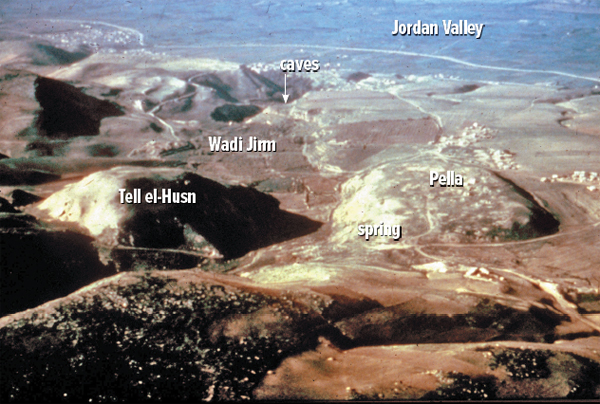Image Details

Courtesy the University of Sydney Pella Project
CHRISTIAN CAVITIES? At the end of the 19th century, Gottlieb Schumacher undertook the first systematic exploration of Pella for the Palestine Exploration Fund and discovered caves cut into the steep north face of Wadi Jirm about 1,600 feet southwest of the main mound. Schumacher suggested that the caves may have been occupied by the Christian refugees of 70 A.D. In 1996 Pamela Watson (now of Australia’s University of New England) surveyed the cave system and discovered that there were in fact two separate cave complexes.
Located 10 feet above the lower complex was another series of rock cavities (caves 666–668). Although unhealthy conditions prevented the excavation of this upper complex, Watson and her team explored and surveyed 12 interconnected round chambers measuring between 10 x 10 feet and 15 x 15 feet (caves 667 and 668). The rock-hewn rooms were impossible to date but were well equipped with stone columns, lamp niches, sleeping benches and porch-like galleries to create relatively comfortable living conditions. It is possible that the early Christian leaders may have hidden in these concealed caves after fleeing Jerusalem.
